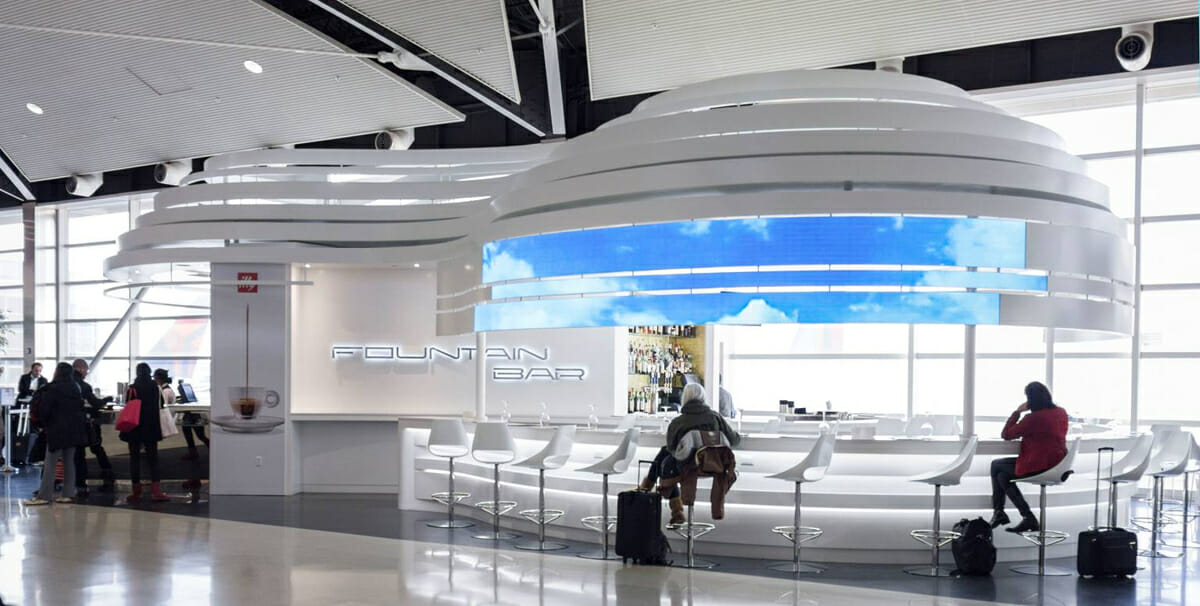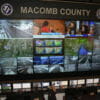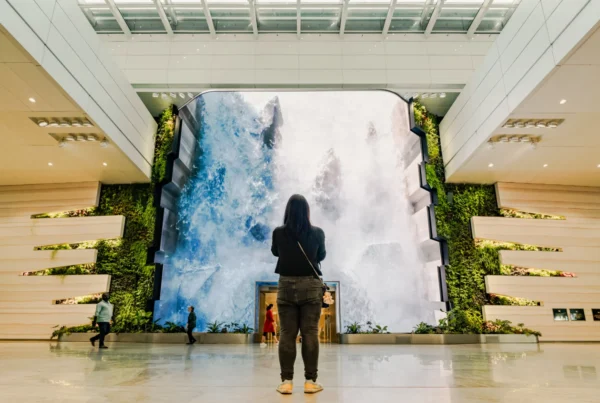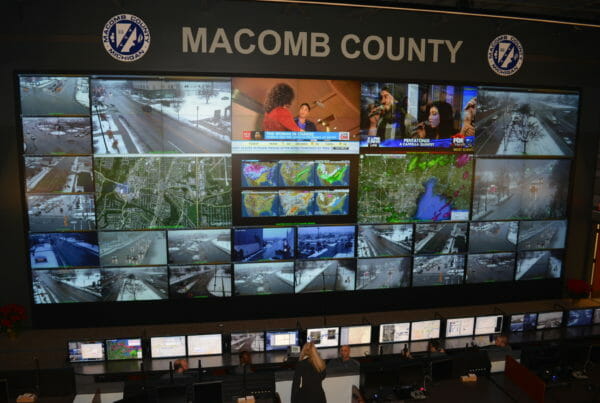It’s no secret that technology permeates our thoughts, experiences, and opinions. The average person becomes more comfortable with additional technologies in their day-to-day lives by the minute. This has created somewhat of an expectation or base level technology requirement for a lot of use cases throughout our daily lives. This is true in retail, where customers expect to interact with products before they buy them (at least digitally). It’s even more true in education where smart classrooms and the ability to reach colleagues all over the world at a moments notice is now the expectation. It’s abundantly clear as well in corporate America as brands launch things like experience centers, and revamp their own conference rooms and lobbies to appear technology forward. We’re now seeing AV technology spill over into the travel and tourism industries. Transit hubs; like bus depots, and airports are a focal point for new technology and allowing for the traveler to be always connected is crucial. This might take the form of important travel information being displayed on large interactive LED displays, or even simply with digital signage both inside and outside of the terminal. It may be ensuring that the audio experience is premium and crystal clear for things like announcements, or even music to liven the experience, or it could possibly take the shape of a brand creating an immersive, interactive brand experience for travelers to engage with a product they might use along the way.
Travel is about to make a resurgence in 2022 and airport & transit authorities are already stating to invest in better experiences for the travelers that pass through their halls. Here are a few thoughts on how AV can be used to creAte tech enabled spaces.
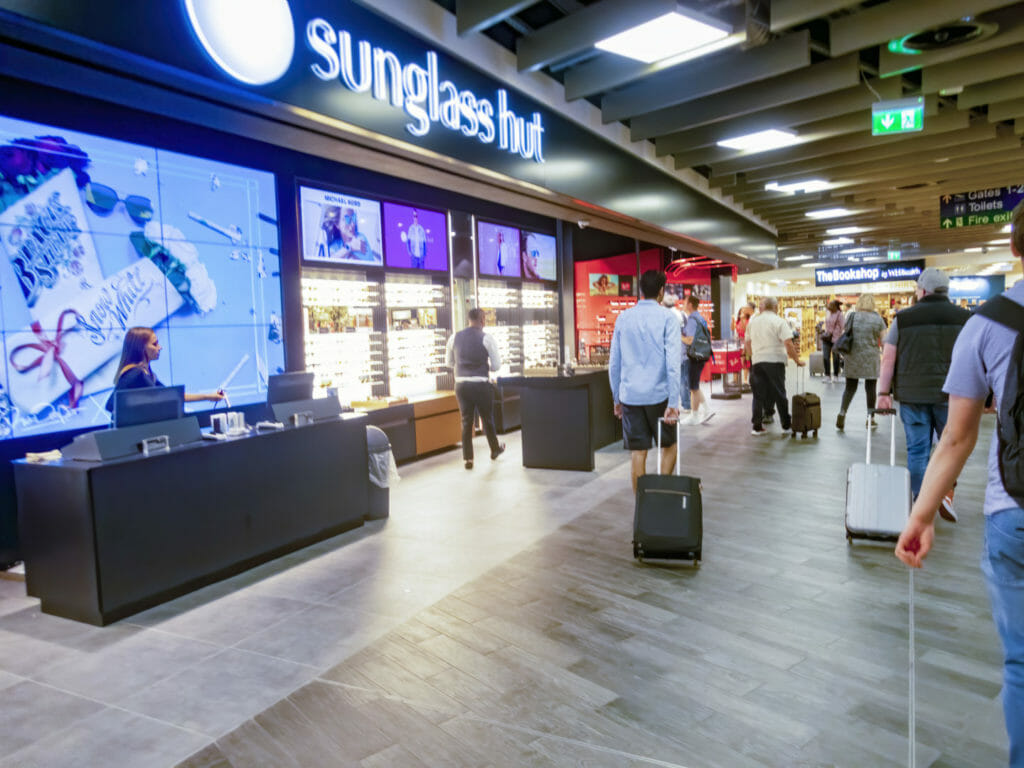
Audiovisual Integration in Airports
After the last few years, travelers want to feel like they are getting a crisp, clean, and bright travel experience. They want to feel like they’re thought of in a premium way and that starts with bright, large displays for advertisements and travel information. Upgrading an airport terminal’s digital signage capabilities is at the top of many improvement lists in 2022. Passengers use displays for everything from looking up flight information, to check in, and even buying items throughout the terminal. Bright, highly visual displays are a must this year.
Video walls that may be placed behind airline counters or within security checkpoints are starting to pop-up in airports of all sizes as well. We’ve even seen some airports feature art on large video walls in concourse areas to provide a talking point for travelers. These walls can even be made interactive or touch-less using laser technology and thus gamification enters the terminals for travelers of all ages.
LED displays, premium audio, and digital signage with a service plan are becoming the non-negotiables at most airports. Those that create truly memorable experiences on top of the basics will be the airports that people like to travel through and bring revenue to.

Audiovisual Integration In Public Transportation: Bus Depot’s Subways & More
We started to see an uptick in public transit use in the US pre-pandemic, but that obviously took a hit during Covid. However, additional safety measures are being implemented by transit authorities all over the country. These efforts to keep passengers safe will at some point lead to a resounding return of travelers using buses, trains, or subways for commutes, or long-distance travel.
These safety concerns can be mitigated with occupancy tracking and occupancy threshold implementation from our friends at WaitTime . Information can then be displayed on digital signage inside and outside of the facility as well as to apps prior to the traveler’s arrival. Enhanced lighting is crucial in public transit to brighten a space and make it feel clean. The importance of audio throughout the facility is also just as important as it is in airports. We’ve also seen a rise in the number of “pop-up” shops that brands are injecting into the public transit experience. In fact, I was in a bus depot over the holidays that had an Eddie Bauer pop-up with about 25 items available and their entire catalog was available through kiosks in the space as well.
Here are some additional details on how to incorporate AW into transportation:
Digital Signage
The use of digital signage can improve the overall quality of travel for passengers, no matter what mode of transportation they happen to be using. Whether it be information, entertaining, or maybe even providing “edutainment” for the traveler, digital signage both inside and outside of the facility is important for communication.
In 2022 there really isn’t a travel facility that shouldn’t have digital signage at the very least. There are so many use cases for it, and the consumer does find it visually appealing. Remember brighter is better as we come out of the pandemic!
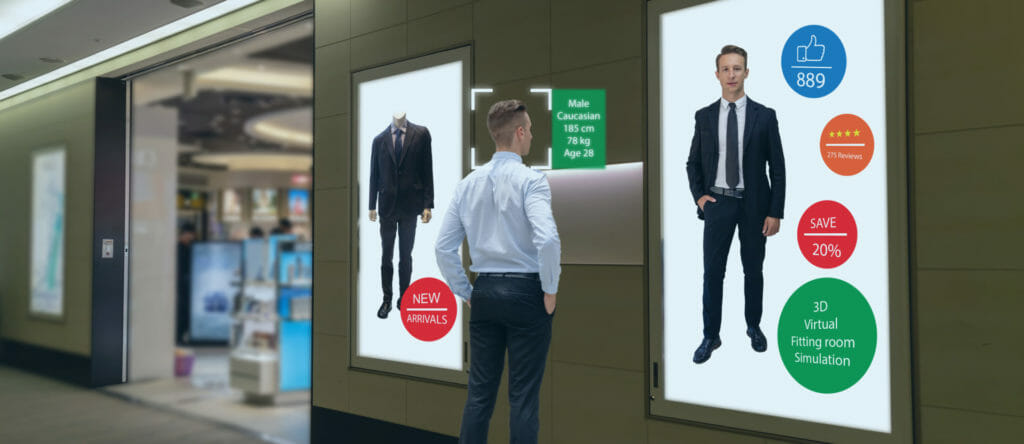
Lighting
Installing the proper lighting in a concourse or terminal requires an experienced audiovisual integrator like Bluewater that can work with project engineers, architects, and the internal stakeholders who understand the subtle nuances and the challenges that may arise. Choosing placement and the proper fixtures allows for a variety of atmospheres to be creates and lighting to provide solutions for traveler use cases. Travelers must have spaces with enough light to eat in some areas, and enough to read in others, while there may even be some dimply list halls for rest and relation. In addition, the lighting chosen must not require frequent maintenance as closing certain areas for maintenance can cause significant difficulties for travelers. A well-lit boarding gate for instance can help the space to appear larger and those flying that day are less likely to feel cramped or uncomfortable before boarding.
Audio
High-quality audio sound systems are an essential element of safe, efficient travel at the airport and public transportation hubs. Announcements are common and can provide personalized information, flight or boarding information, or even call passengers who may be running slightly behind. regarding arrival and departure nuances. While many hubs are incorporating more digital signage, audio simply can’t be overlooked. There is a reason why we call this industry AV. Audio and video work together to create a premium travel experience.
Kiosks
Kiosks have become increasingly critical for transportation hubs in all forms. Kiosks with touch screen capabilities can assist travelers with check-in, or allow them to purchase additional tickets Other non-interactive kiosks can assist with way-finding provide travel information. We’ve also seen gamification built in to allow younger travels something to do while their parents utilize a neighboring kiosk.
Many kiosks are available now in touch screen and touch-less and provide a safe and spaced out alternative to long queues at airport terminal or bus terminal depots. Our retail team builds out kiosks right here in the US and our software team can develop anything you’d like in terms of the user experience. Contact us today.
Control Room Setups and Surveillance
We’ve talked a lot about safety, and nowhere is it more important than at an airport or transit hub. From air traffic control to TSA security, transit hubs must also make a serious commitment to security. Advanced control rooms, complete with LED displays and video walls, empower teams with information to protect travelers on their journey. Bluewater has worked on multiple command center projects over the years, and we can provide the perfect solution for this use in airports and transit hubs.


